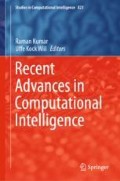Abstract
The domain of artificial intelligence revolutionizes the way in which humans interact with machines. Machine comprehension is one of the latest fields under natural language processing that holds the capability for huge improvement in artificial intelligence. Machine comprehension technique gives systems the ability to understand a passage given by user and answer questions asked from it, which is an evolved version of traditional question answering technique. Machine comprehension is a main technique that falls under the category of natural language understanding, which exposes the amount of understanding required for a model to find the area of interest from a passage. The scope for the implementation of this technique is very high in India due to the availability of different regional languages. This work focused on the incorporation of machine comprehension technique in code-mixed Hindi language. A detailed comparison study on the performance of dataset in several deep learning approaches including End to End Memory Network, Dynamic Memory Network, Recurrent Neural Network, Long Short-Term Memory Network and Gated Recurrent Unit are evaluated. The best suited model for the dataset used is identified from the comparison study. A new architecture is proposed in this work by combining two of the best performing networks. To improve the model with respect to various ways of answering questions from a passage the natural language processing technique of distributed word representation was performed on the best model identified. The model was improved by applying pre-trained fastText embeddings for word representations. This is the first implementation of machine comprehension models in code-mixed Hindi language using deep neural networks. The work analyses the performance of all five models implemented, which will be helpful for future researches on Machine Comprehension technique in code-mixed Indian languages.
Access this chapter
Tax calculation will be finalised at checkout
Purchases are for personal use only
References
Anand Kumar, M., Soman, K.: Amrita-CEN@MSIR-FIRE2016: Code-mixed question classification using BoWs and RNN embeddings. In: FIRE (Working Notes), pp. 122–125 (2016)
Bengio, Y., Ducharme, R., Vincent, P., Janvin, C.: A neural probabilistic language model. J. Mach. Learn. Res. 3, 1137–1155 (2003). http://dl.acm.org/citation.cfm?id=944919.944966
Bojanowski, P., Grave, E., Joulin, A., Mikolov, T.: Enriching word vectors with subword information. Trans. Assoc. Comput. Linguist. 5, 135–146 (2017). http://aclweb.org/anthology/Q17-1010
Bordes, A., Usunier, N., Chopra, S., Weston, J.: Large-scale simple question answering with memory networks (2015). arXiv:1506.02075
Chung, J., Gülçehre, Ç., Cho, K., Bengio, Y.: Empirical evaluation of gated recurrent neural networks on sequence modeling (2014). arXiv:1412.3555
Collobert, R., Weston, J.: A unified architecture for natural language processing: deep neural networks with multitask learning (2008)
Hermann, K.M., Kočiský, T., Grefenstette, E., Espeholt, L., Kay, W., Suleyman, M., Blunsom, P.: Teaching machines to read and comprehend. In: Advances in Neural Information Processing Systems (NIPS) (2015). arXiv:1506.03340
Higgins, B., Nho, E.: LSTM Encoder-Decoder Architecture with Attention Mechanism for Machine Comprehension (2017)
Hochreiter, S., Schmidhuber, J.: Long short-term memory. Neural Comput. 9(8), 1735–1780 (1997)
Joulin, A., Grave, E., Bojanowski, P., Mikolov, T.: Bag of Tricks for Efficient Text Classification (2017)
Kumar, A., Irsoy, O., Su, J., Bradbury, J., English, R., Pierce, B., Ondruska, P., Gulrajani, I., Socher, R.: Ask Me Anything: dynamic memory networks for natural language processing. arXiv:1506.07285
Loatman, R.B., Post, S.D., Yang, C.K., Hermansen, J.C.: Natural Language Understanding System. US Patent 4,914,590 (1990)
Nadeau, D., Sekine, S.: A survey of named entity recognition and classification. 30 (2007)
Turian, J., Ratinov, L.A., Bengio, Y.: Word representations: a simple and general method for semi-supervised learning (2010)
Ratnaparkhi, A.: A Maximum Entropy Model for Part-of-Speech Tagging (2002)
Ravichandran, D., Hovy, E.: Learning surface text patterns for a question answering system. In: Proceedings of the 40th annual meeting on association for computational linguistics, pp. 41–47. Association for Computational Linguistics (2002)
Reiter, E., Dale, R.: Building Natural Language Generation Systems. Cambridge University Press (2000)
Sachin Kumar, S., Kumar, M., Kp, S.: Sentiment analysis of tweets in malayalam using long short-term memory units and convolutional neural nets (2017)
Shawar, B.A., Atwell, E.: Chatbots: are they really useful? LDV Forum 22, 29–49 (2007)
Viswanathan, S., Anand Kumar, M., Soman, K.: A deep learning approach to machine comprehension in code-mixed hindi language. Int. J. Pure Appl. Math. (2018)
Sukhbaatar, S., Szlam, A., Weston, J., Fergus, R.: End-to-end memory networks. In: Cortes, C., Lawrence, N.D., Lee, D.D., Sugiyama, M., Garnett, R. (eds.) Advances in Neural Information Processing Systems, vol. 28, pp. 2440–2448. Curran Associates, Inc. (2015). http://papers.nips.cc/paper/5846-end-to-end-memory-networks.pdf
Sukhbaatar, S., Szlam, A., Weston, J., Fergus, R.: Weakly supervised memory networks (2015). arXiv:1503.08895
Sundermeyer, M., Schlüter, R., Ney, H.: Lstm neural networks for language modeling. In: INTERSPEECH (2012)
Wang, S., Jiang, J.: Machine comprehension using match-LSTM and answer pointer (2016). arXiv:1608.07905
Weston, J., Bordes, A., Chopra, S., Mikolov, T.: Towards ai-complete question answering: a set of prerequisite toy tasks (2015). arXiv:1502.05698
Weston, J., Chopra, S., Bordes, A.: Memory networks (2014). arXiv:1410.3916
Author information
Authors and Affiliations
Corresponding author
Editor information
Editors and Affiliations
Rights and permissions
Copyright information
© 2019 Springer Nature Switzerland AG
About this chapter
Cite this chapter
Viswanathan, S., Anand Kumar, M., Soman, K.P. (2019). A Comparative Analysis of Machine Comprehension Using Deep Learning Models in Code-Mixed Hindi Language. In: Kumar, R., Wiil, U. (eds) Recent Advances in Computational Intelligence. Studies in Computational Intelligence, vol 823. Springer, Cham. https://doi.org/10.1007/978-3-030-12500-4_19
Download citation
DOI: https://doi.org/10.1007/978-3-030-12500-4_19
Published:
Publisher Name: Springer, Cham
Print ISBN: 978-3-030-12499-1
Online ISBN: 978-3-030-12500-4
eBook Packages: Intelligent Technologies and RoboticsIntelligent Technologies and Robotics (R0)

